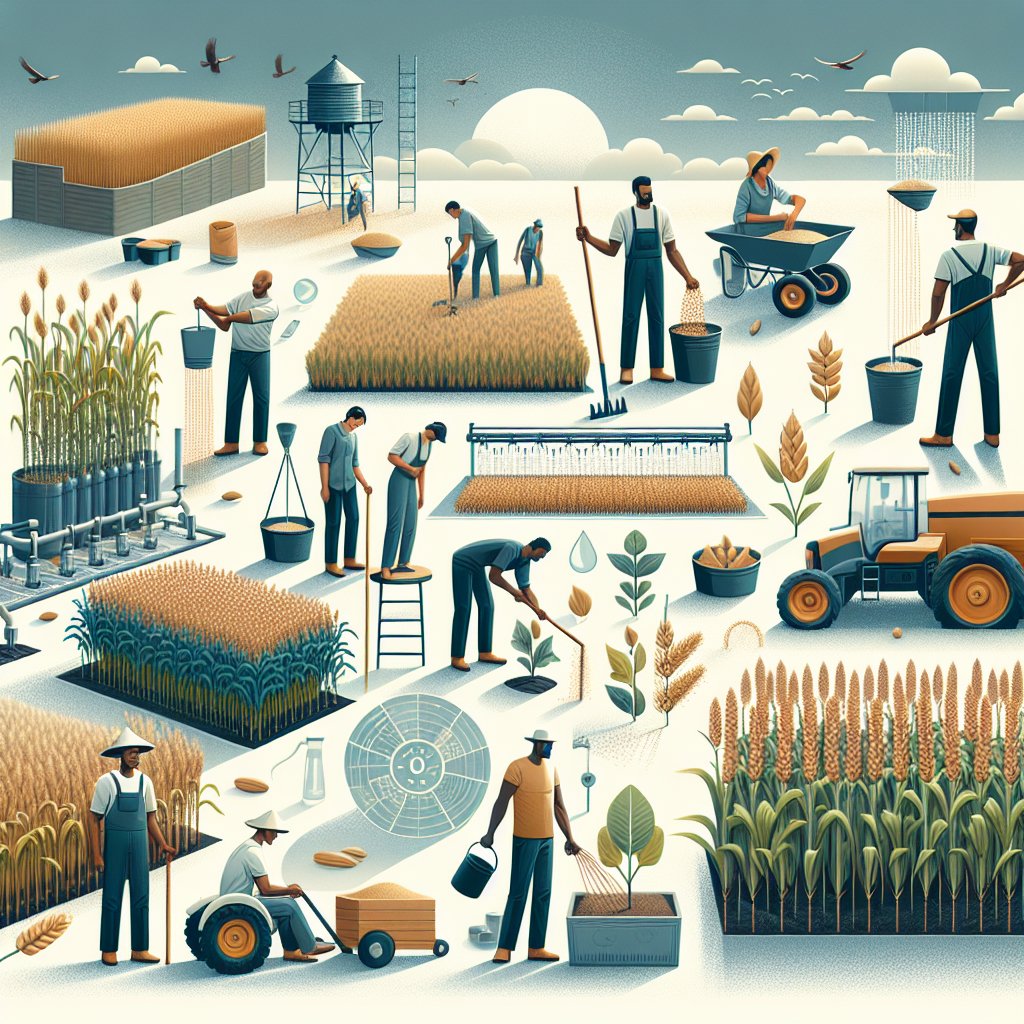
Growing high-yield grain crops on small farms is a challenging yet rewarding endeavor that requires a combination of knowledge, skill, and dedication. With the right strategies and techniques, small-scale farmers can maximize their grain production, ensuring both profitability and sustainability. This article explores various tips and methods to help small farm owners achieve high yields in their grain crops.
Understanding Soil Health and Preparation
One of the most critical factors in achieving high yields in grain crops is the health and preparation of the soil. Healthy soil provides the necessary nutrients and environment for crops to thrive. Therefore, understanding and improving soil health should be a top priority for any farmer.
Soil Testing and Analysis
Before planting, it is essential to conduct a thorough soil test to determine its nutrient content, pH level, and overall health. Soil testing provides valuable information that can guide farmers in making informed decisions about fertilization and soil amendments. Many agricultural extension services offer soil testing at a reasonable cost, and the results can help tailor a specific nutrient management plan for the farm.
Improving Soil Structure
Soil structure plays a significant role in water retention, root penetration, and nutrient availability. To improve soil structure, farmers can incorporate organic matter such as compost or well-rotted manure. These materials enhance soil aeration, increase water-holding capacity, and provide a slow-release source of nutrients. Additionally, practices like crop rotation and cover cropping can help maintain and improve soil structure over time.
Choosing the Right Grain Varieties
Selecting the appropriate grain varieties is crucial for achieving high yields on small farms. Different varieties have varying resistance to pests, diseases, and environmental conditions. Therefore, choosing the right variety can significantly impact the success of the crop.
Climate and Environmental Considerations
When selecting grain varieties, it is essential to consider the local climate and environmental conditions. Some varieties are better suited to specific climates, such as drought-resistant varieties for arid regions or cold-tolerant varieties for areas with shorter growing seasons. Consulting with local agricultural experts or extension services can provide valuable insights into the best varieties for a particular region.
Resistance to Pests and Diseases
Pests and diseases can severely impact grain yields, making it crucial to choose varieties with built-in resistance. Many modern grain varieties have been bred for resistance to common pests and diseases, reducing the need for chemical interventions. By selecting resistant varieties, farmers can minimize crop losses and reduce their reliance on pesticides, promoting a more sustainable farming practice.
Implementing Effective Crop Management Practices
Effective crop management practices are essential for maximizing grain yields. These practices include proper planting techniques, irrigation management, and pest control strategies.
Optimal Planting Techniques
Proper planting techniques can significantly influence the growth and yield of grain crops. Farmers should ensure that seeds are planted at the correct depth and spacing to promote healthy root development and reduce competition for resources. Using precision planting equipment can help achieve uniform seed distribution and depth, leading to more consistent crop stands.
Irrigation and Water Management
Water is a critical resource for grain crops, and effective irrigation management can make a significant difference in yield outcomes. Farmers should implement efficient irrigation systems, such as drip or sprinkler systems, to ensure that crops receive adequate water without wastage. Monitoring soil moisture levels and adjusting irrigation schedules based on weather conditions can help optimize water use and prevent over-irrigation.
Pest and Weed Control
Pests and weeds can compete with grain crops for nutrients and water, reducing yields. Integrated pest management (IPM) strategies, which combine biological, cultural, and chemical control methods, can effectively manage pest populations while minimizing environmental impact. Regular field scouting and monitoring can help detect pest and weed issues early, allowing for timely interventions.
Utilizing Technology and Innovation
Advancements in agricultural technology and innovation offer small farmers new tools and techniques to enhance grain production. Embracing these technologies can lead to more efficient and productive farming practices.
Precision Agriculture
Precision agriculture involves using technology to monitor and manage field variability in crops. Tools such as GPS-guided equipment, drones, and remote sensing can provide detailed information about crop health, soil conditions, and pest pressures. By leveraging this data, farmers can make more informed decisions about resource allocation, leading to increased efficiency and higher yields.
Data-Driven Decision Making
Data-driven decision-making involves collecting and analyzing data to guide farming practices. By keeping detailed records of crop performance, weather patterns, and input usage, farmers can identify trends and make adjustments to improve future yields. Software tools and mobile applications can assist in data collection and analysis, making it easier for farmers to implement data-driven strategies.
Conclusion
Growing high-yield grain crops on small farms requires a comprehensive approach that combines soil health management, variety selection, effective crop management, and the use of technology. By implementing these strategies, small-scale farmers can optimize their grain production, ensuring both profitability and sustainability. As the agricultural landscape continues to evolve, staying informed about new techniques and innovations will be crucial for small farmers aiming to achieve high yields and long-term success.

